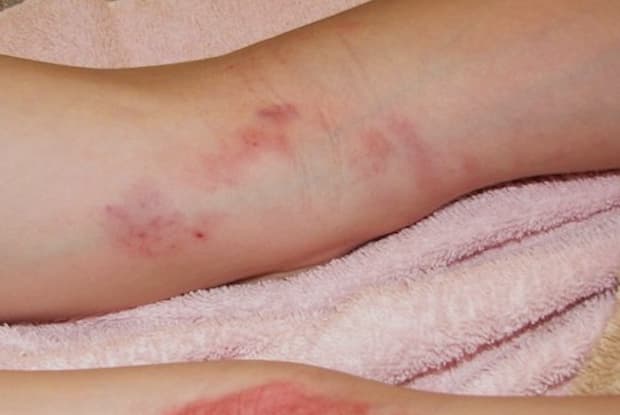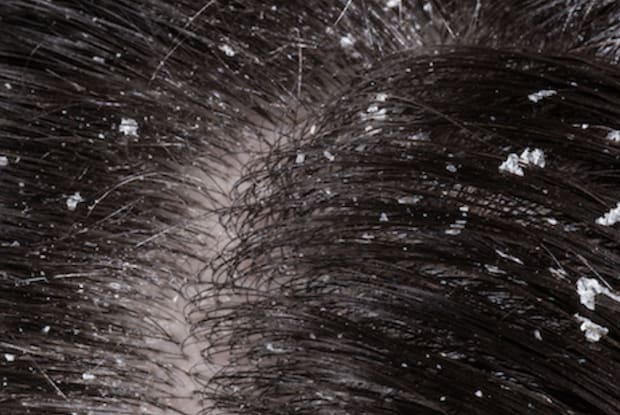Table of Contents
What is Eczema?
Eczema is a very common skin condition that causes the skin to become dry, cracked, and scaly. Also known as dermatitis, this condition affects approximately 35 million people in the United States. Most of those affected are children. Around 70 percent of eczema cases develop when the patient is younger than five years old. [1]
Most forms of eczema occur in episodes that come and go. There are several different treatment options available, depending on the type of eczema that you have and the severity of the condition. Calcineurin inhibitors such as Protopic (tacrolimus) and Elidel (pimecrolimus) are often prescribed and effectively reduce red and itchy skin. For more serious conditions, your doctor may prescribe a corticosteroid medication such as prednisone.
While you may think that all eczema is the same, there are actually several different forms of the condition, with different causes and different symptoms. Keep reading to learn more about the most common forms of eczema.
Atopic dermatitis (AD) is the most common form of eczema. It is such a common form that the terms eczema and atopic dermatitis are often used interchangeably. [2] However, it is important to remember that eczema is the umbrella term for all of the following conditions. Atopic dermatitis typically begins during childhood and is often milder or completely gone by adulthood. [3] This form of eczema is a genetic condition that causes a defective skin barrier. This barrier is unable to fully protect the body from irritation and infections. [4] The most common symptom of atopic dermatitis is itching. AD can also cause rashes to form anywhere on the body but is often found in the creases of elbows and knees. These rashes can ooze fluid and repeated scratching can cause bleeding and thickened or hardened skin. [5] As the name suggests, contact dermatitis occurs when the skin comes in contact with, and reacts to certain substances. Contact dermatitis can be further split into two categories. Irritant contact dermatitis is caused by repeated exposure to an irritating substance such as detergents, shampoos, solvents, and certain acids. Allergic contact dermatitis occurs when the immune system has an allergic reaction. Common allergens include some medications, latex, rubber, certain plans, certain metals, and cosmetics. [6] This form of eczema causes the skin to itch, burn, and sting. Contact dermatitis can also cause hives and blisters. After a period of time, the skin may become scaly or leathery. [3] Neurodermatitis is a similar condition to atopic dermatitis and causes thick, scaly rashes. These patches are often very itchy and can cause bleeding or infections when scratched. However, while atopic dermatitis is often widespread, neurodermatitis typically only affects one or two areas of the body. [7] Neurodermatitis most commonly affects adults between 30 and 50 and is rare in children. [7] Doctors do not know the cause of this condition, although it is often found in those with other forms of eczema. [3] Dyshidrotic eczema is another form of eczema that is more common in adults. This condition, also known as pompholyx eczema, is usually found in adults younger than 40. Dyshidrotic eczema causes intense itching and blisters, typically on the hands and feet. [6] Dyshidrotic eczema is more common during the wintertime and can be caused by damp hands and feet, allergies, stress, and exposure to substances, including chromium salt, nickel, and cobalt. [3] While people may have a single episode of dyshidrotic eczema, this condition usually persists over an extended period of time. [8] Nummular eczema causes coin-like red marks on the skin. It usually occurs on the legs, arms, lower back, hips, and the backs of the hands. Nummular eczema is also known as discoid eczema and is more common in men than women. Women tend to develop nummular eczema earlier. While women tend to get this type of eczema during early adulthood, men usually develop it after the age of 50. [9] It is not known what causes nummular eczema. However, common triggers for the condition include skin that is naturally dry or sensitive. It can also be triggered by damage to the skin caused by scrapes, chemical burns, or insect bites. [10] It may surprise you to learn that dandruff is actually a form of eczema. Known as seborrheic dermatitis, this condition causes the skin to flake and fall off. Dandruff commonly affects the scalp, but may also be found on the eyebrows, nose, behind the ears, chest, and groin. [9] It is believed that dandruff is caused by an overgrowth in a type of yeast and an overgrowth of cells. Seborrheic dermatitis is most common in children and adults aged between 30 and 60. Dandruff in children typically clears by itself. In adults, it can be persistent, lasting a number of years. [11] Stasis dermatitis usually affects a person’s lower legs and occurs when fluid leaks out of weak veins and into the skin. It happens in people with insufficient blood flow to their lower legs. This condition causes legs to swell and ache. Stasis dermatitis can also cause more common eczema symptoms such as dry, cracked, and scaly skin, itchy patches, and blisters. [3] This form of eczema is also known as varicose eczema, venous eczema, gravitational eczema, or stasis eczema. [6] The content in this article is intended for informational purposes only. This website does not provide medical advice. In all circumstances, you should always seek the advice of your physician and/or other qualified health professionals(s) for drug, medical condition, or treatment advice. The content provided on this website is not a substitute for professional medical advice, diagnosis or treatment.
Atopic Dermatitis
Contact Dermatitis

Neurodermatitis
Dyshidrotic Eczema
Nummular Eczema
Dandruff

Stasis Dermatitis
